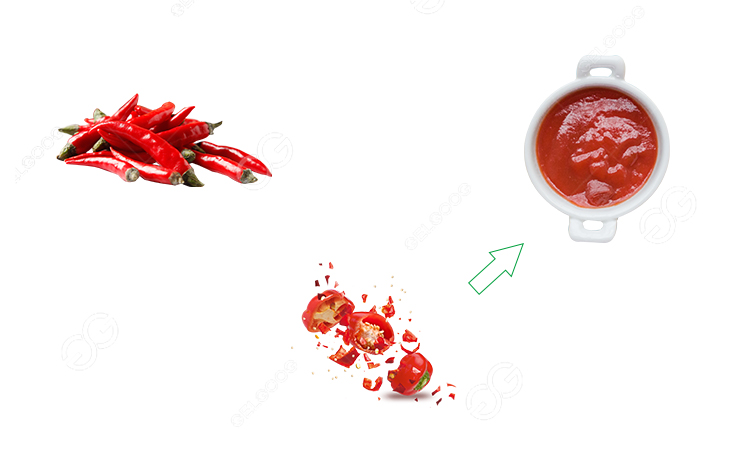Chili sauce, with its fiery flavor and versatile uses, has become a staple condiment in cuisines around the world. Behind every bottle of chili sauce lies a fascinating journey of production, blending tradition with modern techniques to create that perfect balance of heat and flavor. Let’s delve into the chilli sauce production process.

Sourcing quality ingredients:
The foundation of any great chili sauce begins with sourcing high-quality ingredients. Chili peppers, the heart of the sauce, are carefully selected based on their variety, flavor profile, and heat level. Other key ingredients such as vinegar, garlic, sugar, and spices are also sourced from trusted suppliers to ensure consistency and flavor.
Cleaning and preparation:
Once the ingredients are brought into the factory, they undergo rigorous cleaning and preparation processes. Chili peppers are washed, sorted, and inspected for any imperfections. Other ingredients are measured and prepared according to the recipe specifications.
Grinding and mixing:
The next step in the production process involves grinding the chili peppers and other ingredients into a smooth paste. This can be achieved using industrial-grade grinders and mixers, which ensure uniformity in texture and flavor. The precise blending of ingredients is crucial to achieving the desired taste profile of the chili sauce.
Cooking:
After mixing, the chili paste is transferred to large kettles or vats for cooking. The mixture is heated to a specific temperature to activate enzymes, develop flavors, and ensure food safety by eliminating any harmful bacteria. Cooking times may vary depending on the recipe and desired consistency of the sauce.
Flavor development:
During the cooking process, additional ingredients such as vinegar, sugar, salt, and spices are added to enhance the flavor profile of the chili sauce. These ingredients are carefully measured and added at precise intervals to achieve the perfect balance of sweetness, acidity, and spiciness.
Cooling and packaging:
Once the cooking process is complete, the chili sauce is rapidly cooled to halt the cooking process and preserve freshness. It is then transferred to packaging lines where it is filled into bottles, jars, or other containers. Labels are applied, and the packaged products are inspected for quality control before being prepared for distribution.
Quality control and assurance:
Throughout every stage of production, stringent quality control measures are in place to ensure that the chili sauce meets the highest standards of quality and safety. Samples are regularly tested for flavor, consistency, and microbial contamination to guarantee a premium product for consumers.
Distribution and storage:
After passing quality control checks, the packaged chili sauce is ready for distribution to retailers, restaurants, and consumers worldwide. Proper storage conditions are essential to maintain the freshness and flavor of the sauce, with temperature-controlled warehouses ensuring optimal conditions until it reaches the hands of eager customers.
The production of chili sauce is a meticulous process that blends tradition with modern technology to create a beloved condiment enjoyed by millions. If you want to start a chili sauce making business, we can supply you all machines for making chili sauce.